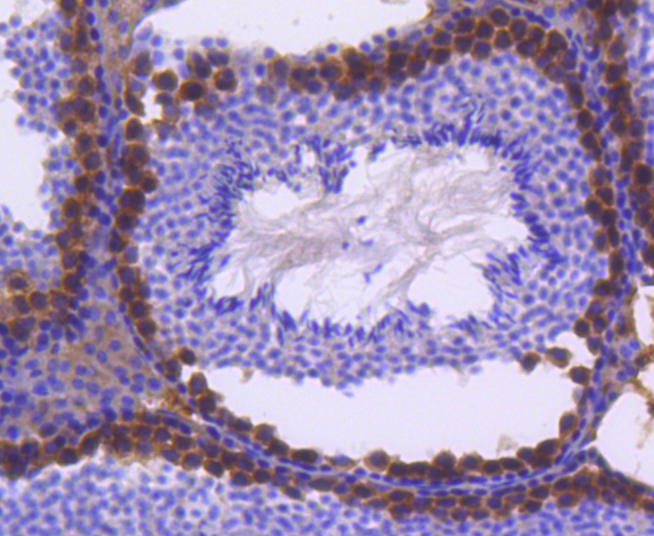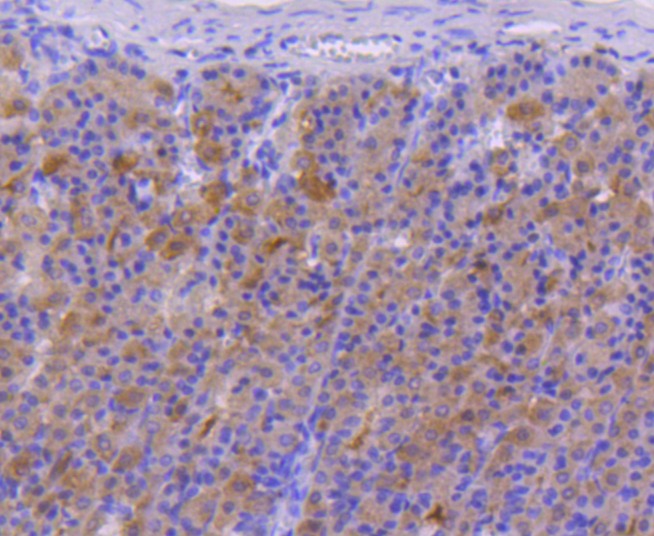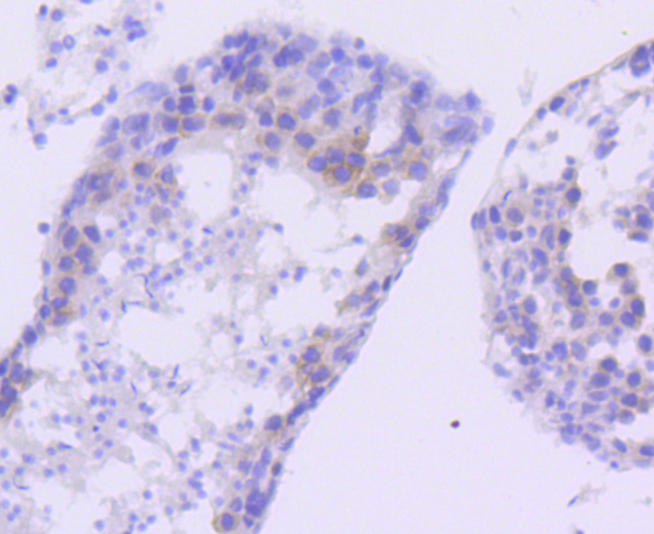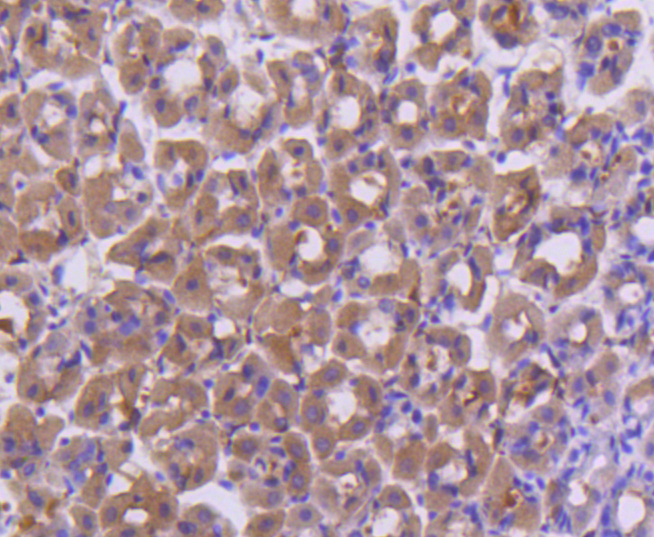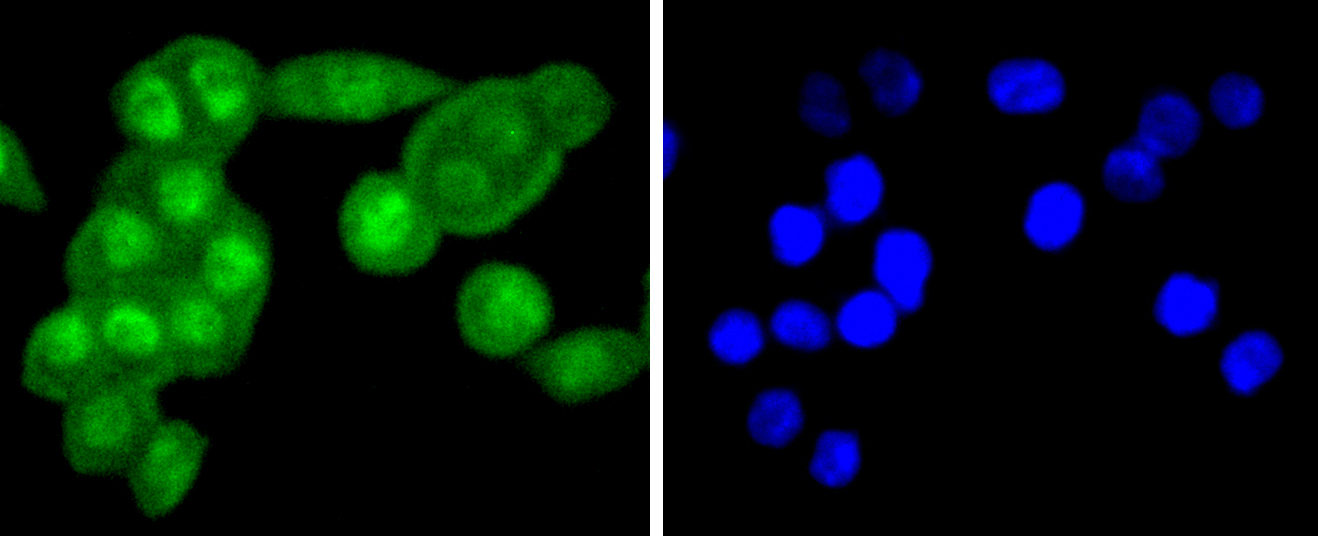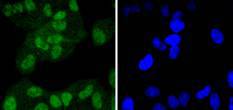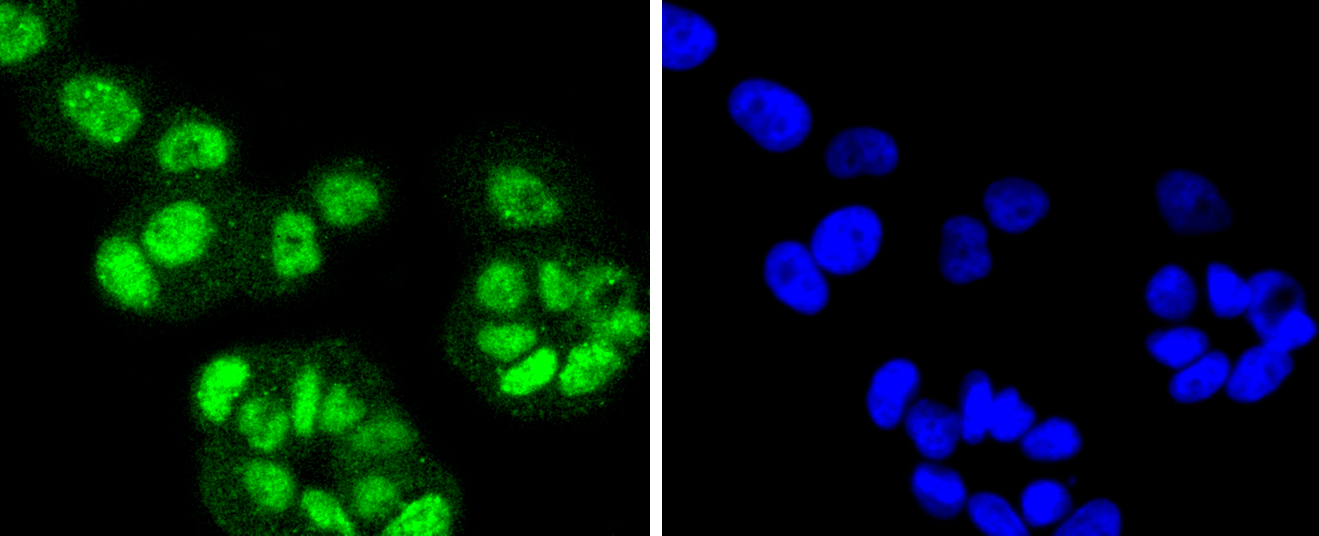Fanconi anemia (FA) is an autosomal recessive disorder character-ized by bone marrow failure, birth defects and chromosomal instability. At the cellular level, FA is characterized by spontaneous chromosomal breakage and a unique hypersensitivity to DNA cross-linking agents. At least 8 complementation groups (A-G) have been identified and 6 FA genes (for subtypes A, C, D2, E, F and G) have been cloned. The FA proteins lack sequence homologies or motifs that could point to a molecular function. Phosphorylation of FANC (Fanconi anemia complementation group) proteins are thought to be important for the function of the FA pathway. Several FA proteins, including FANCA, FANCC, FANCF, and FANCG, interact in a nuclear complex, and this complex is required for the activation (monoubiquitination) of the downstream FANCD2 protein. When monoubiquitinated, the FANCD2 protein co-localizes with the breast cancer susceptibility protein BRCA1 in DNA damage induced foci. In male meiosis, FANCD2 also co-localizes with BRCA1 at synaptonemal complexes. The human FANCD2 gene maps to chromosome 3p25.3, contains 44 exons and encodes a 1,451-amino acid nuclear protein that exists as 2 protein isoforms.

